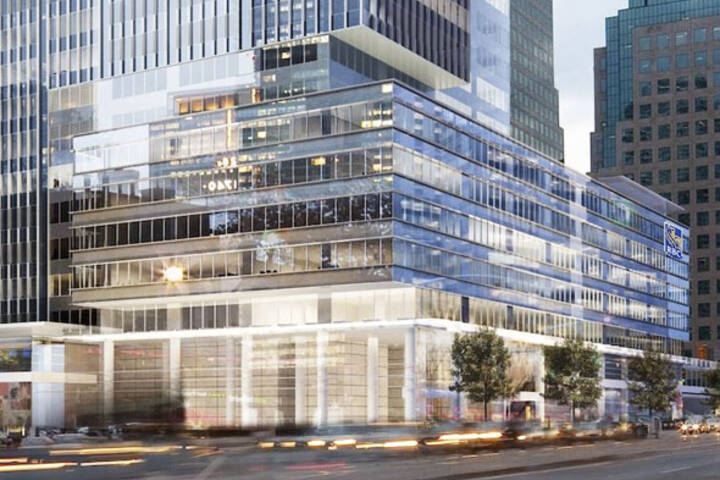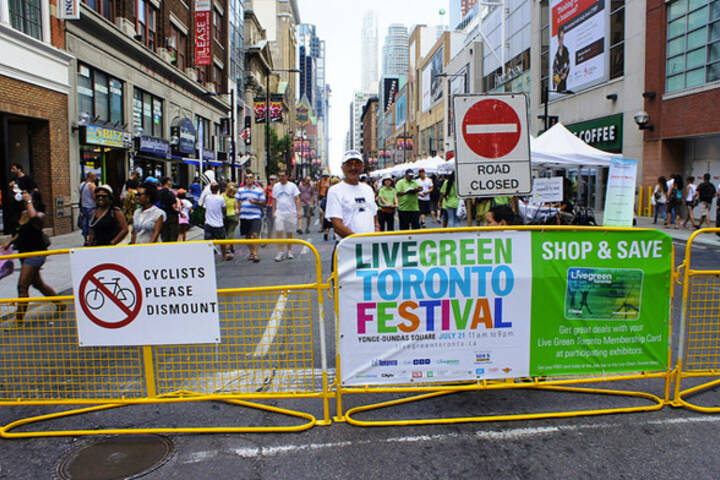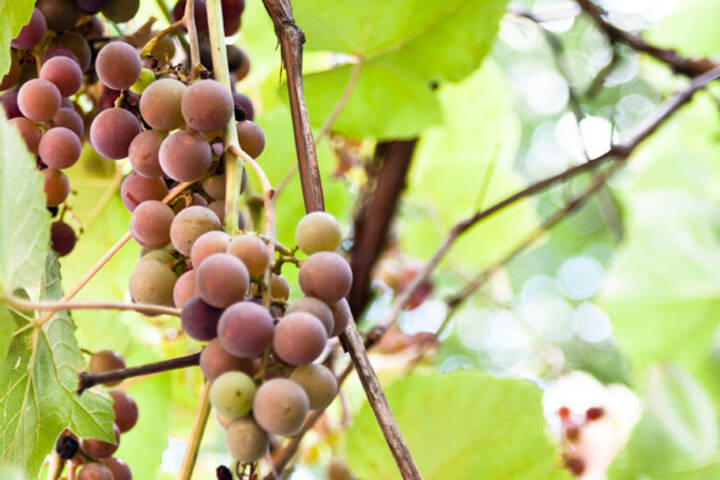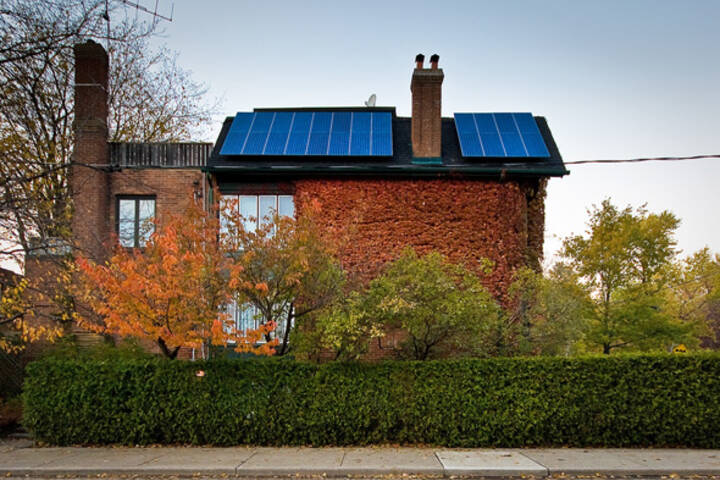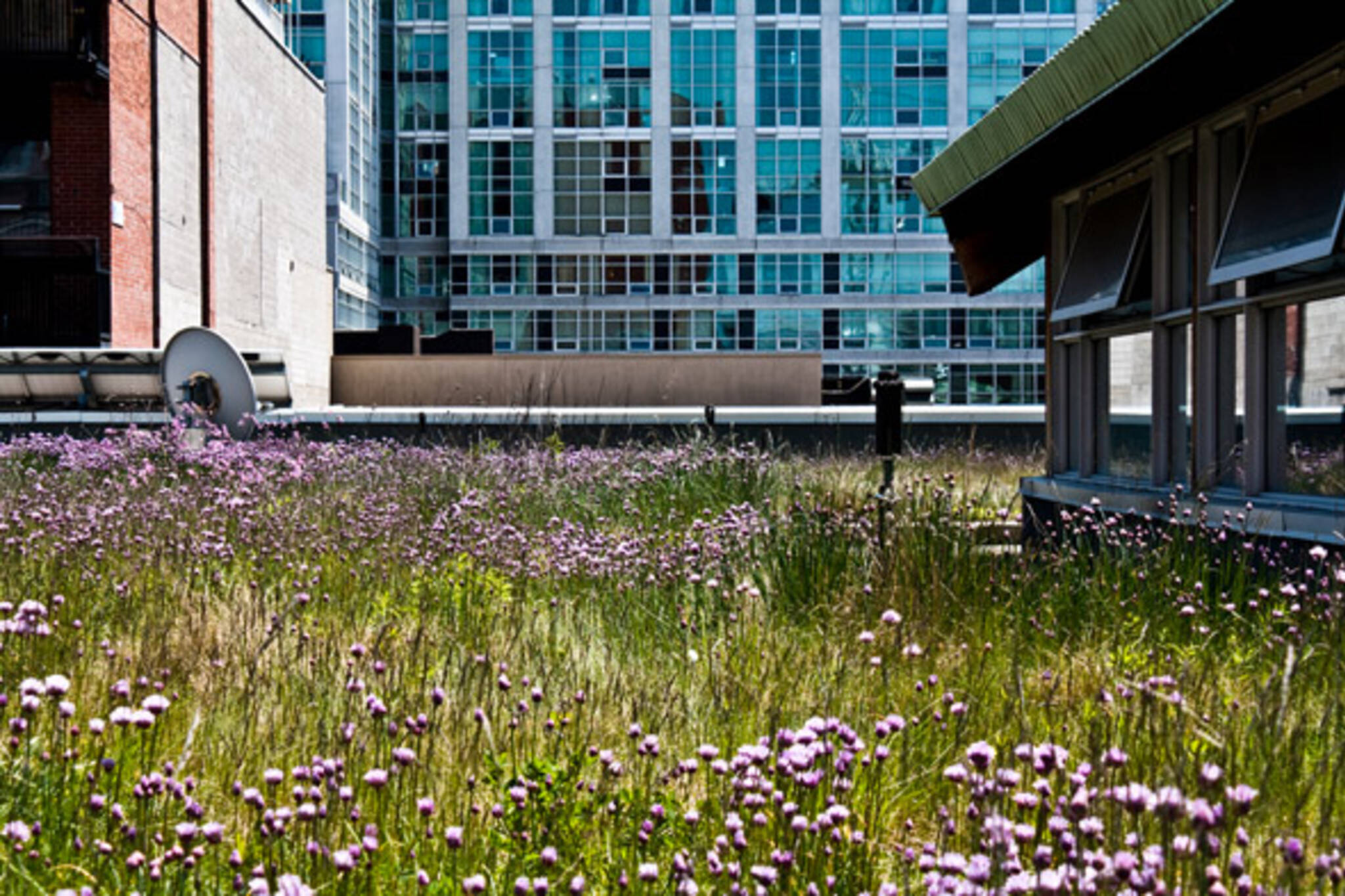
Green Roof Bylaw Set to Take Effect in Toronto
Things are about to get a lot greener around Toronto -- well, at least when looking down from above. On January 31st, two environmental initiatives designed to foster a more sustainable urban landscape will take effect: a new Green Roof Bylaw and a tougher version of the Toronto Green Standard (TGS).
Both the Green Roof Bylaw and the updated TGS are key elements of the City's Climate Change Action Plan, which aims to reduce Toronto's greenhouse gas emissions by 80 per cent by 2050.
As of the end of this month, all applications for residential and commercial/institutional buildings above 2,000 square metres of gross floor area will require a green roof (the bylaw will take effect for industrial buildings a year later). The coverage of the greenery will range from 20-60 per cent depending on the size of the building.
The upper end of that range (60 per cent) applies to buildings with an excess of 20,000 square metres of gross floor area. To give you an idea of how big that is, the Hudson Bay Centre at Yonge and Bloor has a floor area in the neighbourhood of 160,000 square metres.
What constitutes a green roof? The green area needs to include vegetation, a growing medium, filter and root resistance layers, and a waterproof membrane. Some notable buildings that already feature green roofs are Mountain Equipment Co-Op, Ryerson's Engineering Building, and the YMCA on Grosvenor Ave.
Needless to say, not all developers are happy about the bylaw. "I don't think anybody is warm and fuzzy about having a green roof bylaw impressed on them as a prescriptive method," Stephen Upton, a vice president for development at Tridel Corp., commented when it was first announced that the City would be proceeding with the initiative in June 2009.
But both the City and environmental activists point out that extensive green roof implementation can reduce storm-water run off, filter carbon dioxide out of the air, and reduce the urban heat island effect by lowering ambient temperatures by as much as two degrees Celsius.
Also taking effect on January 31 is a reworked version of the TGS. Adopted by City Council in 2006, the TGS was a set of environmental performance initiatives originally only binding for City-owned facilities. Private development could voluntarily choose to adopt the initiatives, but adherence was not mandated.
That's set to change with the implementation of a new two-tiered system. The formerly voluntary tier 1 requirements will now be compulsory with the addition of a more stringent set of tier 2 guidelines. These tier 2 guidelines will now be voluntary, but those developers willing to meet them may be eligible for a development charge refund of 20 per cent. More details can be found here.
Toronto is the first city in North America to mandate the inclusion of green roofs as part of new development. What do you think? Are they worth the potential increase in building costs? Will they really make much of a difference? Is Toronto doing enough to address climate change?
Photo by smuncky, member of the blogTO Flickr pool.
Latest Videos
Latest Videos
Join the conversation Load comments
